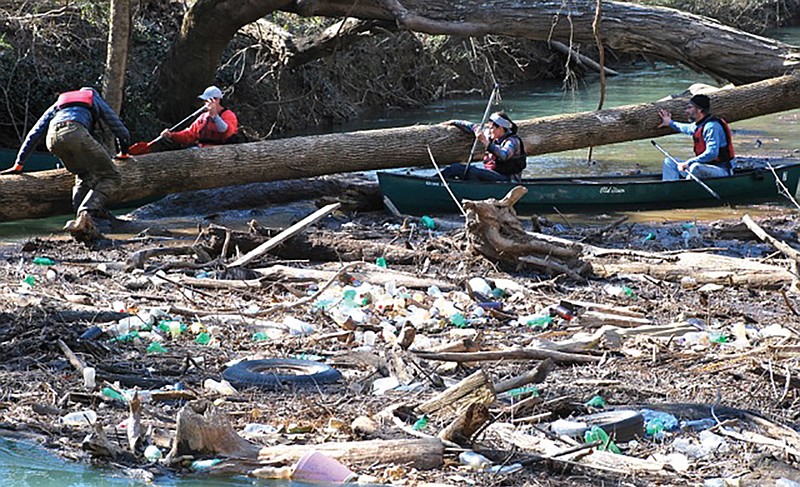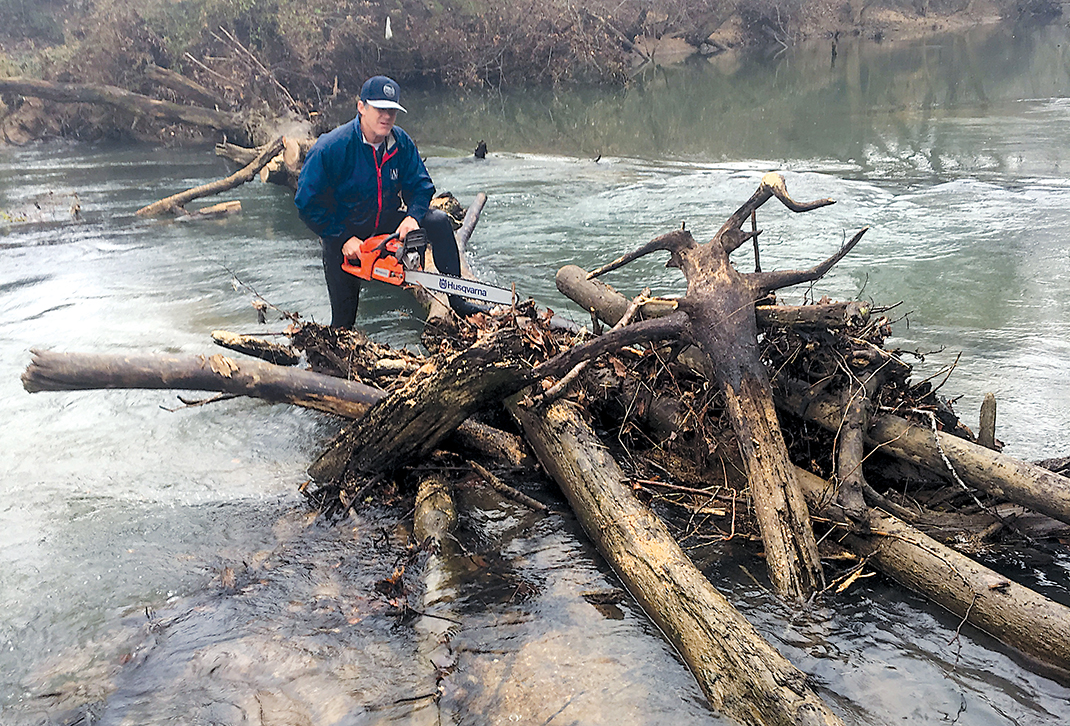Ridding 77 miles' worth of debris is no walk in the park, especially when it's not a park but, rather, a waterway that needs cleaning. But that isn't stopping local runner and Wild Trails Director Randy Whorton, who is shifting his focus from his feet to his hands to help make the local blueways more navigable for paddlers. To accomplish the feat, he's partnering with L2 Outside's Dirk Unkle and Seth Bigham.
While there have been efforts in the last few years to clean up waterways such as Lookout Creek and North Chickamauga Creek, Whorton says there's always been something missing for the truly massive undertaking - the biggest of which was a volunteer base to make it happen. Over the last few years, Whorton says, he has gathered the manpower needed for such an undertaking. Also, he recently solved the issue of how to cut up large fallen trees in the water, so now is the time to move.
"I've heard Lookout Creek was cleared 40 years ago and you could paddle from Trenton to downtown Chattanooga in one go," says Whorton. "It's been a long time since someone could do that, and my question is, why can't we?"
Storms inevitably lead to downed trees. Then, Whorton explains, litter collects in the branches, leading to a feedback loop that can create dams of trash that are difficult to remove, especially considering the difficulty of removing downed trees from the moving water. Whorton and Wild Trails recently acquired chain-saws with extended blades to cut through the trees without having to submerge the chain-saw, meaning the more troublesome trees in Lookout Creek can now be dealt with. And with them gone, volunteers will be able to clear the trash blockages, thus ridding the creeks of one of their most serious issues.
Using hand saws, Whorton says it could take 15 days to clear 1 mile, but with his newly acquired chain-saws, it only took one day, and that was just a test run.
"We definitely think there's a demand to paddle these creeks," Unkle says. "We hear from people all the time in the shop how nice it would be to have access to our smaller waterways."
Whorton hopes that once the heavy lifting is done, maintaining the cleanup effort will work just like trail maintenance.
"The first time you carve out a running trail, it takes tremendous effort to make it accessible, but once you're finished, there's only moderate work each year to keep it clear," he explains. "That's what we're hoping for here."
In addition to the 77 miles of local waterways, Whorton says a long-term goal is to clean up the creeks in the Sequatchie Valley, including the Sequatchie River, which will add another 40 miles of work.
For more information and updates on their work, visit wildtrails.org.
Easy ways you can help
» Don't put anything except water down storm drains. » Fix leaks that drip from your car and put down a liner in your driveway to collect oil and other materials, as these can easily make their way to storm drains. » Don't pave your property, since pavement is impermeable and forces more water down the storm drains - potentially after picking up pollutants on its way to the drain. » Choose non-toxic household products whenever possible. » Avoid using pesticides or chemical fertilizers. » Don't use soaps or cleaning products that contain triclosan, a registered pesticide. » Pick up after your pets, as the bacteria found in their waste is a contaminant. Source: Clean Water Action of California

